Jaw Shaping in Egypt
Search and Compare the Best Clinics and Doctors at the Lowest Prices for Jaw Shaping in Egypt

Find the best clinics for Jaw Shaping in Egypt
No clinics available
Malaysia offers the best prices Worldwide
Price: $ 672

- Home
- Egypt
Compare Before & After Photos of _procedure_photos.phpJaw Shaping
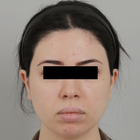
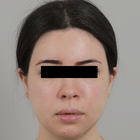
Front view


Front view
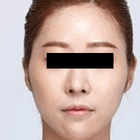
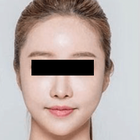
Front view
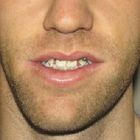

Front view
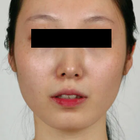
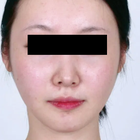
Front view
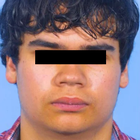
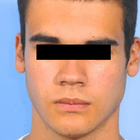
Front view

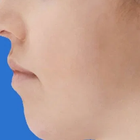
Full-side view
WHY US?
At Medijump, we're making medical easy. You can search, compare, discuss, and book your medical all in one place. We open the door to the best medical providers worldwide, saving you time and energy along the way, and it's all for FREE, no hidden fees, and no price markups guaranteed. So what are you waiting for?

Free

Best Price

Widest Selection

Risk-Free
What you need to know about Jaw Shaping in Egypt
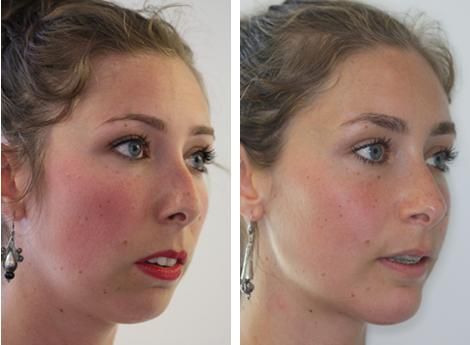
Also known as Mandibular Angle Reduction, V Line Surgery or Jawline Surgery, Jaw Shaping Surgery is performed with the purpose of narrowing the lower part of the face, with particular emphasis on the mandible (lower jaw) and the muscular attachments.
A wide jaw angle can be caused by enlarged muscle, bone, or a combination of the two. A prominent jaw angle or square jaw is considered a masculine trait, particularly in Asian countries. Therefore, many people opt for surgical correction to get their desired look. The surgery can shorten an overly long jaw and change a square-shaped face to an oval shape. Some people with temporomandibular joint (TMJ) disorders, uneven jaws, or jaws that causes pain when chewing might also undergo this surgery to correct pain.
There are several critical elements involved in the surgery, including the angles of the jaw, the body of the mandible, and the shape of the chin. While the procedure is typically performed on women with a square jawline who want a more feminine look, it can be done on both men and women. However, this procedure may not work for people who want to feminize a male’s face since males usually have a taller and longer face. Therefore, a V Line Surgery would only make a face look more elongated.
What does a Jaw Shaping Procedure Involve?
Various developmental, congenital, or some rare disorders such as acromegaly can cause enlarged mandibles, which can be corrected by Jawline Surgery. It is ideal for those with overly square or U-shaped jawline, overly manly jaw shape, bloated cheeks, and double chin. If you are considering V line surgery, you will need to be in a good state of physical and mental health.
Prior to the surgery, you will be examined by X-rays and 3D CT scans. Your surgeon will analyze and evaluate the overall structure of your jaw to create a plan to produce the desired result. You will also need to undergo medical tests such as ECGs to ensure that you don’t have a condition that may put you in danger or compromise the success of the surgery.
Surgery is performed under general anesthetic through tracheal intubation and leaves minimal scarring. You will need to fast for 8 hours before the surgery. Oscillating saws are used to reshape the jaw. The surgery can be performed inside the mouth (intraoral) or from outside the mouth (postauricular). The intraoral approach is the most widely used method. With this approach, an incision is made between the gum and the back of the cheek next to the jaw. Then, the jawline is carved out into their desired shape. A portion of the masseter muscle is shaved off, and the outer portion of the bone is chipped off. This approach is best for patients who aim to narrow their frontal view since the change is subtle and natural.
If the patient wants to change the appearance of the jaw angle from a side view, the overall contour of the bone will need to be changed. This means that the patient needs a full-thickness bone removal. Although it can be done through the intraoral approach, the surgeon’s view during this approach is very limited, which can decrease the precision of the procedure. Therefore, the best approach is from outside of the mouth or postauricular. To get direct access to the bone, the surgeon makes an incision hidden around the ear. This approach can remove a more substantial amount of bone. The recovery time using this approach is also much shorter than the intraoral approach since the swelling stays confined to the neck area.
How Long Should I Stay in Egypt for a Jaw Shaping Procedure?
The typical length of time for Jaw Shaping is usually around 2 hours. Nevertheless, you have to stay in the hospital for around one to two days for initial recovery where you will be monitored to make sure everything is fine. After being discharged, plan to stay in the Egypt for 10 to 14 days or until the surgeon says you can go home. The stitches are generally removed within two weeks after surgery, though this may vary from patient to patient.
What's the Recovery Time for Jaw Shaping Procedures in Egypt?
Immediately after the surgery, you will need to wear a facial mask that presses tightly against the skin around the jaw to keep the post-surgery swelling down. Also, you will not be allowed to eat foods that require chewing because it will delay the recovery and can cause bleeding. If you undergo the intraoral approach, your food intake will be limited for a considerable length of time. You may feel some swelling, numbness, and discomfort around the incision for several days, but the surgeon will prescribe medications to help with the pain.
The recovery period can be different for each individual; some people may be able to go back to their regular routines after seven to ten days, but others may need more time to fully recover. Avoid doing any vigorous activity that increases your blood pressure for several weeks, such as jogging and other exercises. Most of the visible signs, such as swelling and bruising, should disappear within a few weeks. Symptoms such as hematoma and infection are common, and will usually subside within three to six months post-surgery.
What sort of Aftercare is Required for Jaw Shaping Procedures in Egypt?
You must follow your surgeon aftercare instructions strictly to accelerate your recovery and minimalize possible complications. The instruction will likely include the following recommendations:
- Food intake. You may need to consume a liquid diet for a week after surgery as drinking your food is less painful and prevents trauma to the jaw area. You should be able to consume hard foods within one month.
- Oral hygiene. An antibacterial mouth rinse will keep your mouth and incision area clean, which will decrease the possibility of infection.
- Avoid tobacco and alcohol. Smoking and drinking alcohol should be avoided for a while.
- Keep the head elevated. You should keep your head elevated even when you are sleeping as it is the key to reduce swelling.
- Compression bandage. You are recommended to wear a compression bandage at all times for the first three days and while sleeping for the first week or two.
- Avoid strenuous activity. Do not do any heavy lifting or exercise for at least a month. However, do walk around and practice some gentle movement.
- Attend follow up appointments. The surgeon will check your progress to avoid any complications.
What's the Success Rate of Jaw Shaping Procedures in Egypt?
Jaw shaping surgery is a safe procedure when performed by a trained surgeon. Around 94% of patients express their satisfaction with this procedure. However, it is important to have realistic expectations. You should also be aware of the possible risks that this surgery may cause. These risks include infection, asymmetry, seroma, deep vein thrombosis, pulmonary embolism, and hematoma. Partial numbness of the jaw can also happen due to nerve damage.
Are there Alternatives to Jaw Shaping Procedures in Egypt?
If you wish to reshape your jaw but do not want to undergo surgery, there are non-invasive options available. The most popular alternatives are Botox and Dysport, which can effectively contour the jaw by relaxing the appearance of a square jaw. This procedure shrinks the masseter muscle by weakening it. These injectable can also be used to correct facial asymmetry around the jawline area. Since they are non-invasive, you can return to your daily activates right away and they offer a subtler shift in your appearance. However, these techniques are limited to cases in which the masseter is enlarged and may not work as well as V Line Surgery.
Whilst the information presented here has been accurately sourced and verified by a medical professional for its accuracy, it is still advised to consult with your doctor before pursuing a medical treatment at one of the listed medical providers
No Time?
Tell us what you're looking for and we'll reachout to the top clinics all at once
Enquire Now

Popular Procedures in Egypt
Prices Start From $70

Prices Start From $28

Prices Start From $1,945

Prices Start From $275

Recommended Medical Centers in Egypt for procedures similar to Jaw Shaping

- Interpreter services
- Translation service
- Religious facilities
- Medical records transfer
- Medical travel insurance
- Health insurance coordination
- TV in the room
- Safe in the room
- Phone in the room
- Private rooms for patients available

- Interpreter services
- Translation service
- Religious facilities
- Medical records transfer
- Medical travel insurance
- Health insurance coordination
- TV in the room
- Safe in the room
- Phone in the room
- Private rooms for patients available

- Interpreter services
- Translation service
- Religious facilities
- Medical records transfer
- Medical travel insurance
- Health insurance coordination
- TV in the room
- Safe in the room
- Phone in the room
- Private rooms for patients available

- Interpreter services
- Translation service
- Religious facilities
- Medical records transfer
- Medical travel insurance
- Health insurance coordination
- TV in the room
- Safe in the room
- Phone in the room
- Private rooms for patients available

- Interpreter services
- Translation service
- Religious facilities
- Medical records transfer
- Medical travel insurance
- Health insurance coordination
- TV in the room
- Safe in the room
- Phone in the room
- Private rooms for patients available

- Interpreter services
- Translation service
- Religious facilities
- Medical records transfer
- Medical travel insurance
- Health insurance coordination
- TV in the room
- Safe in the room
- Phone in the room
- Private rooms for patients available

- Interpreter services
- Translation service
- Religious facilities
- Medical records transfer
- Medical travel insurance
- Health insurance coordination
- TV in the room
- Safe in the room
- Phone in the room
- Private rooms for patients available

- Interpreter services
- Translation service
- Religious facilities
- Medical records transfer
- Medical travel insurance
- Health insurance coordination
- TV in the room
- Safe in the room
- Phone in the room
- Private rooms for patients available

- Interpreter services
- Translation service
- Religious facilities
- Medical records transfer
- Medical travel insurance
- Health insurance coordination
- TV in the room
- Safe in the room
- Phone in the room
- Private rooms for patients available

- Interpreter services
- Translation service
- Religious facilities
- Medical records transfer
- Medical travel insurance
- Health insurance coordination
- TV in the room
- Safe in the room
- Phone in the room
- Private rooms for patients available
Jaw Shaping in and around Egypt
About Egypt
Egypt is a spectacular fusion of splendid beaches, diverse wildlife, delectable cuisine, and a consistently sunny climate. Its historical significance is rooted deeply in Ancient Egypt - one of the most influential and fascinating civilizations to have ever existed. Journey back into the corridors of time as you visit Egypt's famous architectural wonders such as the iconic Pyramids of Giza and the historically rich Valley of the Kings.
With every twist and turn along the River Nile, brace yourself for a captivating journey into the past, and lose yourself in the labyrinth of bustling bazaars. Egypt invites you to revel in the architectural grandeur of some of its most renowned temples, be awed by the commanding presence of the Sphinx, and acquaint yourself with the distinct Nubian culture. Egypt presents an intriguing mélange of timeless history, vibrant cultures and stunning natural beauty.
One of the unique advantages of considering cosmetic surgery in Egypt is that it allows you to pair your medical trip with a satisfying holiday, all at a price that would typically cover only the surgery in many developed nations. Many top-notch clinics are concentrated in Cairo, the capital. However, there are also excellent private medical facilities in Heliopolis, Zamalek, Maadi, and Gizeh. Eleven of these are accredited by the Joint Commission International (JCI), vouching for their high quality of services.
The bulk of the medical tourists in Egypt come from other Arabic-speaking nations and across the African continent, drawn in by the affordability and expertise on offer. Particularly, Jaw Shaping procedures have gained notable popularity, further consolidating Egypt's position as a favorable destination for medical tourism.
Popular Parts of Egypt
Currently, Egypt is home to over 95 million inhabitants, securing its place as the most populous country in North Africa and standing third in terms of population across Africa. With its majestic historical landmarks, the sweeping expanse of the Nile, and the captivating allure of its deserts, Egypt extends an open invitation to all who seek to explore the grandeur of the ancient world. This fusion of history and natural beauty offers a unique landscape that continues to enchant millions of global citizens, making Egypt a must-visit destination.
- Cairo is the capital of Egypt as well as the largest city in the country and it is a perfect blend of ancient and modern culture. Visitors from all over the world come to see the Great Pyramid of Giza, the iconic Sphinx, or the magnificent tomb of Tutankhamun. Modern attractions such as its countless museums and busy markets are also popular with tourists.
- Luxor has frequently been called the world’s greatest open-air museum. Tourists can visit the Valley of the Kings, wander around the Temple of Dier el-Bahari, or discover the beauty of the Karnak Temple. Not only home to the extraordinary temple ruins of ancient Thebes, but this city also lies in a breathtaking setting of the Nile River and astonishing desert. Tourists should complete their visit to this beautiful city by taking a sunset felucca cruise on the Nile River.
- Alexandria is a major economic center and the second-largest city in Egypt. The city has an impressive and interesting past, which began when Alexander the Great founded the city around 331 BC and it was home to the Pharos and the Great Library. Now, although the legendary buildings have disappeared, tourists can still learn about its past from the Alexandria National Museum, Bibliotheca Alexandrina, Kom el-Dikka, and Fort Qaitbey. Tourists can also relax in The Corniche, a scenic promenade overlooking the beautiful sea.
- Aswan is located in the south of Egypt. It is part of the UNESCO Creative Cities Network in the craft and folk art category. The city is a major destination for cruise boats on the River Nile, making it a favorite place for tourists. The local market in this city is known to be a superb place for holiday shopping, especially for those looking for fresh spices. The most popular attractions in or around the city are Sharia as-Souq, Nubian Museum, Unfinished Obelisk, Abu Simbel, and Philae Temple.
- Sharm El Sheikh is situated on the coastal strip along the Red Sea. The city is the perfect beach gateway and is known for its outstanding beaches and some of the best dive spots in the world with a stunning coral reef. Dive into the crystal clear water and encounter schools of sharks, moray, and barracuda. Other than the underwater scenery, tourists can explore the Sinai desert by camel, take a tour to Saint Catherine’s Monastery, or relax in the Red Sea Resort.
Weather and Climate in Egypt
Characterized mainly by a sweltering desert climate, Egypt remains significantly dry throughout, apart from its northern areas along the Mediterranean Sea. These northern regions break from the norm, being comparatively more humid and receiving the lion's share of the country's annual rainfall, offering a contrasting picture to Egypt's otherwise arid landscape.
Summer in Egypt exhibits average temperatures hovering around 35 °C, but there can be instances where temperatures escalate beyond 40 °C. These extreme temperature spikes are often accompanied by increased levels of humidity, intensifying the overall heat experience during the country's summer months.
Winter ushers in a pleasant climate, making it a popular time for tourists, although it results in crowded tourist spots and slightly higher costs. Cities like Alexandria may receive occasional showers, contributing to increased dampness during this season.
Winter is recognized for being Egypt's breeziest season. During this time, daytime temperatures typically float around a comfortable 20°C. When night descends, the temperature can drop further towards 10°C, introducing a gentle chill. Mindfully sandwiched between the country's dominant hot desert climate, this period offers a refreshing contrast as it unveils Egypt's mild winter chill.
Getting Around in Egypt
There are several international airports in Egypt: Cairo International Airport, Burg Al Arab Airport, Hurghada Airport, Luxor Airport, Marsa Alam Airport, and Sharm El Sheikh International Airport. The main and the busiest airport is Cairo International airport which serves both domestic and international flights to Asia and Europe. The airport is the hub for Egypt Air, Egypt Air Express, and Nile Air. Budget airlines such as Flynas and FlyEgypt also operate flights from this airport.
Egypt has a dependable and efficient public transport network and tourists can travel by rail which covers a limited network of routes. Trains travel is the best option for long-distance travel and there are air-conditioned trains that offer a more comfortable option. But if you are looking for a cheaper alternative, a non-air-conditioned economy class is also available.
If you're looking for a budget-friendly and swift mode of travel, buses present an ideal choice. Primarily employed for longtrips, these buses conveniently link major cities across the country. Tickets for these bus journeys can be conveniently secured at the Cairo Gateway bus terminal, making it an easily accessible option for tourists interested in exploring the breadth of Egypt.
Taxis and Uber are available in most cities, providing easier travel for tourists. In Cairo, the taxis are painted white and black. In Alexandria, the taxis are painted orange and black. The taxis are generally metered but there are also taxis that will refuse to use the meters. Tourists should insist on using the meter or agree on a fare before getting into one. Long-distance group taxis are also available and are relatively cheap and be sure to agree on the fares and bargain if necessary.
Tourist Visas in Egypt
Every traveler planning a visit to Egypt needs a visa, barring citizens from visa-exempt countries such as Bahrain, Hong Kong, and Saudi Arabia who are allowed to stay for up to 90 days without one.
A Visa-on-Arrival service, which simplifies the process, is available to several nationalities, including Australia, Japan, Russia, and all European Union citizens. This Visa-on-Arrival is valid for an initial 30 days but can be extended for another 30 days if needed. These visa policies aim to facilitate easier and regulated travel to and from Egypt.
For citizens of 46 countries, which includes major nations such as the United States, Canada, and the United Kingdom, an electronic visa is easily available. The e-Visa, valid for a 30-day period, can conveniently be applied for and obtained online via the official Egyptian government's website.
For all other nationals who don't fall under the visa exemption agreement, visa on arrival, or electronic visa categories, a visa application must be filed at their nearest Egyptian embassy or consulate. This makes the process of securing a visa to Egypt more streamlined and accessible, ensuring a smooth travel experience for visitors.
Additional information about the Visas:
- All visitors to Egypt must have a passport valid for at least six months beyond their intended date of departure from Egypt.
- Visitors who obtain a visa on arrival or an e-Visa must pay a visa fee. The visa fee varies depending on your nationality.
- Visitors who apply for a visa at an Egyptian embassy or consulate may also need to provide additional documentation, such as a proof of onward travel or a letter of invitation.
Additional Information
- Local Currency: The local currency is the Egyptian pound (EGP). 1 USD will get you 30.90 EGP.
- Money & Payments: ATMs are available in major cities, but if you are planning to go to remote places, prepare to bring cash with you. Credit cards are accepted in the midrange and high-end restaurants, hotels, and shops. Tipping is generally expected everywhere.
- Local Language: There are various languages spoken in Egypt. The official language is Classical Arabic but the most widely spoken language is Egyptian Arabic. Since the county was occupied by the British from 1882 to 1952, many people will speak English.
- Local Culture and Religion: Islam is the state religion of Egypt. There are also small groups of Christian and Jews.
- Public Holidays: Egypt celebrates religious and national holidays including Coptic Easter Sunday, Christmas Day, End of Ramadan, and Revolution Day.
Popular Searches
- Plastic Surgery in Thailand
- Dental Implants in Thailand
- Hair Transplant in Thailand
- Breast Augmentation Thailand
- Gastric Sleeve in Thailand
- Gender Reassignment Surgery in Thailand
- Laser Hair Removal in Bangkok
- Botox in Bangkok
- Dermatology in Bangkok
- Breast Augmentation in Bangkok
- Coolsculpting in Bangkok
- Veneers in Turkey
- Hair Transplant in Turkey
- Rhinoplasty in Turkey
- Stem Cell Therapy in Mexico
- Rhinoplasty in Mexico
- Liposuction in Mexico
- Coolsculpting in Tijuana
- Rhinoplasty in Korea
- Scar Removal in Korea
- Gastric Sleeve in Turkey
- Bone Marrow Transplant in India
- Invisalign in Malaysia
- Plastic Surgery in the Dominican Republic
- Tummy Tuck in the Dominican Republic
- Plastic and Cosmetic Surgery in Poland
- Rhinoplasty in Poland
- Hair Implant in Poland
- Dental Implants in Poland
- IVF in Turkey